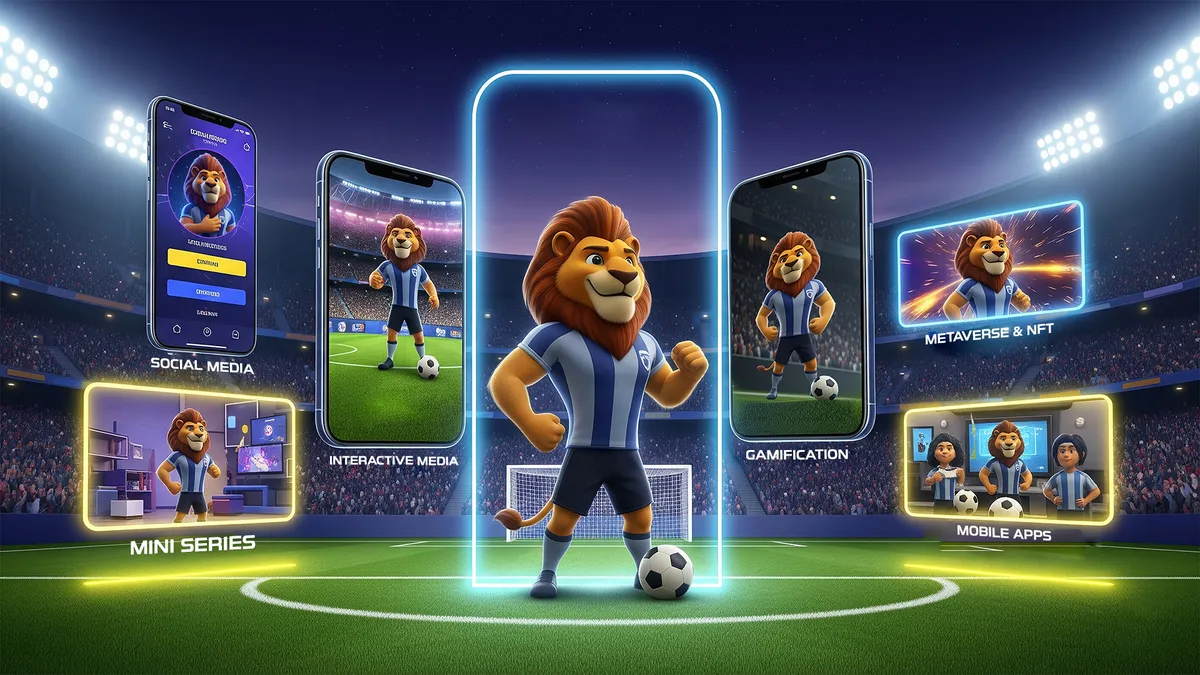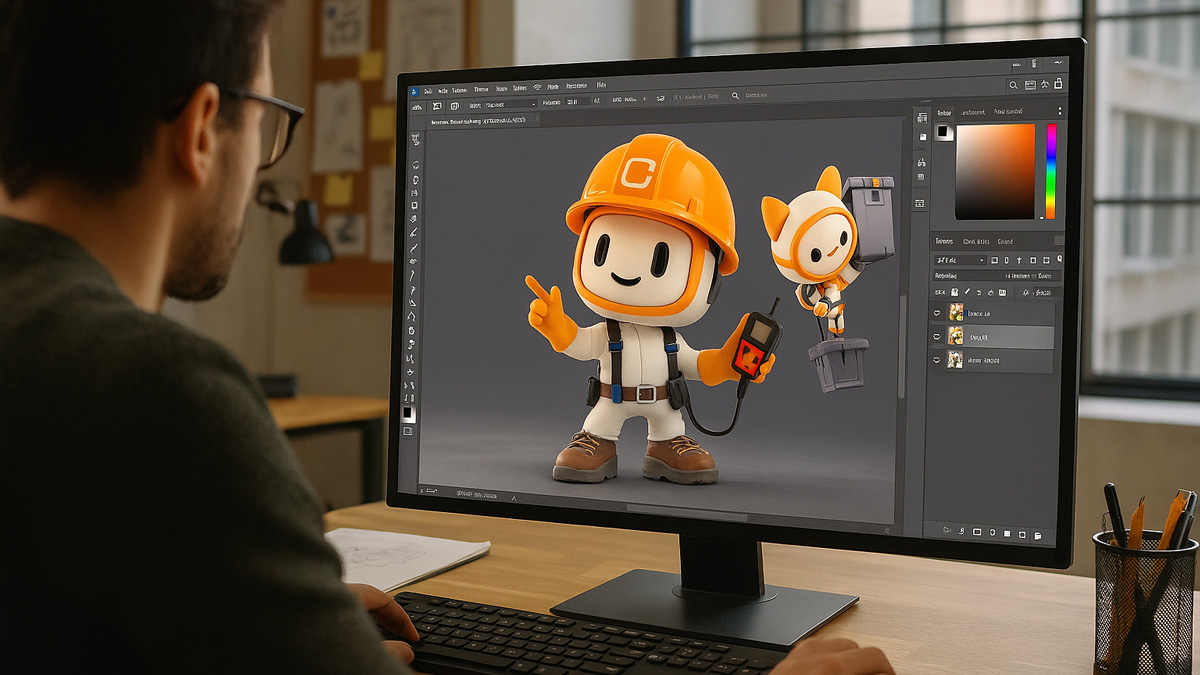
How to create a brand mascot? Should it be a humanoid character or an animal? To properly answer these questions, we first need a clear understanding of what brand mascots are.
In this article, we’ll build on that foundation and show you, step-by-step, how to build a brand mascot from scratch.
Let’s begin by briefly defining the essence of mascots.
Overview of a Brand Mascot
Brand mascots are visual representations that act as brand representatives in various channels and help them achieve diverse marketing, branding, and advertising goals.
Almost all big brands have been leveraging such assets for several years, and recently, it’s been recorded that small- to medium-sized brands are starting to take advantage of mascots in several ways.
Let’s keep it to this brief definition. If you’d like to learn more about this, read the blog: “What are Brand Mascots?”
Now, it’s time to examine the steps that need to be taken to create a mascot.
How to Make a Mascot?
A brand mascot is much more than a superficial creation representing a business. It is meant to personify a brand by embodying its core values.
In other words, the mascot must possess a unique personality that is tightly related to the brand it represents.
That’s why you should invest in creating a professional mascot that inherits your brand’s characteristics. This will embed your business in the minds of your target audience as soon as they see it.
Now, you may wonder how to create a mascot that effectively represents your business. In this blog, you’ll find the answer to this question.
Although creating a mascot is a task that requires experts in this field, we’ll try to simplify the process as much as possible. The goal is to inform you about how the process goes.
First of all, we need a branding strategy!
Before taking the initial steps to create a mascot, you must think about your branding. The brand mascot wants to represent the brand, but without a branding plan, developing a brand mascot is a waste of money and time.
A branding plan should include at least these sections to use in brand mascot development:
- Brand Vision and Mission
- Brand Values
- Brand Positioning
- Brand Identity
- Market Research and Competitive Analysis
- Target Audience
- Brand Story
- Brand Differentiation
Unfortunately, many brands that come to us for this service lack the proper branding and have not yet defined their business branding. This creates serious challenges that we must overcome before proceeding with mascot development.
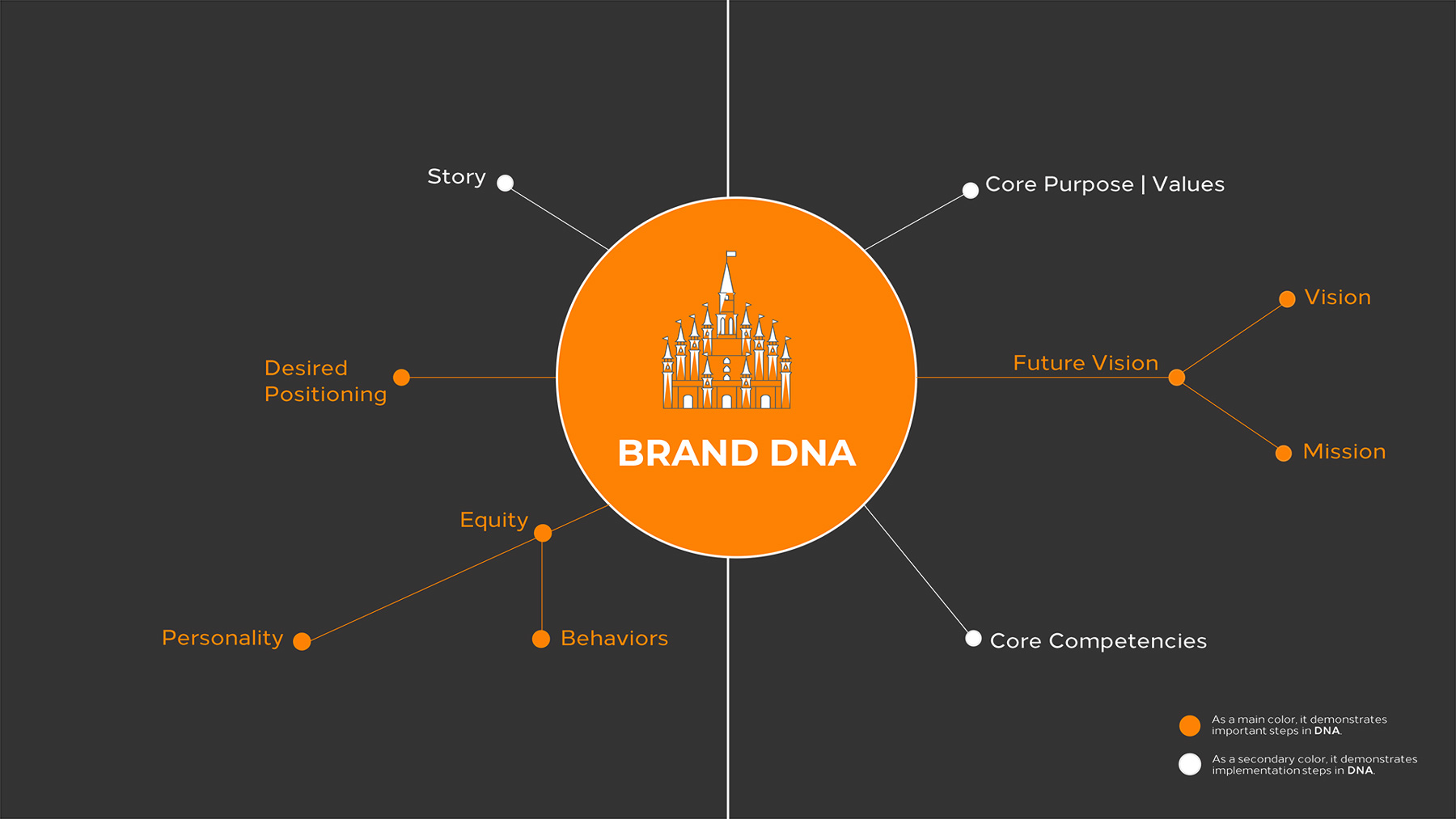
It’s like building castles in the air.
To make a great brand mascot, we start with solid branding. We’ll keep the brand in mind throughout the whole process, from developing the mascot’s world to designing its look.
Overall, the brand mascot must be created according to the brand’s personality and in order to attract its target audiences.
For more information on this, read the blog: “What Should You Do Before Creating Your Mascot?”
Creating a Background Story and Unique Universe
Imagine a famous brand mascot. What makes it so memorable?
Let’s take Duolingo’s owl as an example.
Do you think it’s just the cute and fun look that makes it special?
Like all well-designed mascots, that owl has something important you can’t see right away: a story!
This background story and the unique world it lives in are very important. They help people remember the mascot and make it easier for brands to tell stories, follow trends, or create marketing campaigns using it.
A mascot without a story is like living with someone but knowing nothing about their past — it just doesn’t work!
A brand mascot is meant to connect with people. And that connection won’t happen without shared values, personality, and a clear identity.
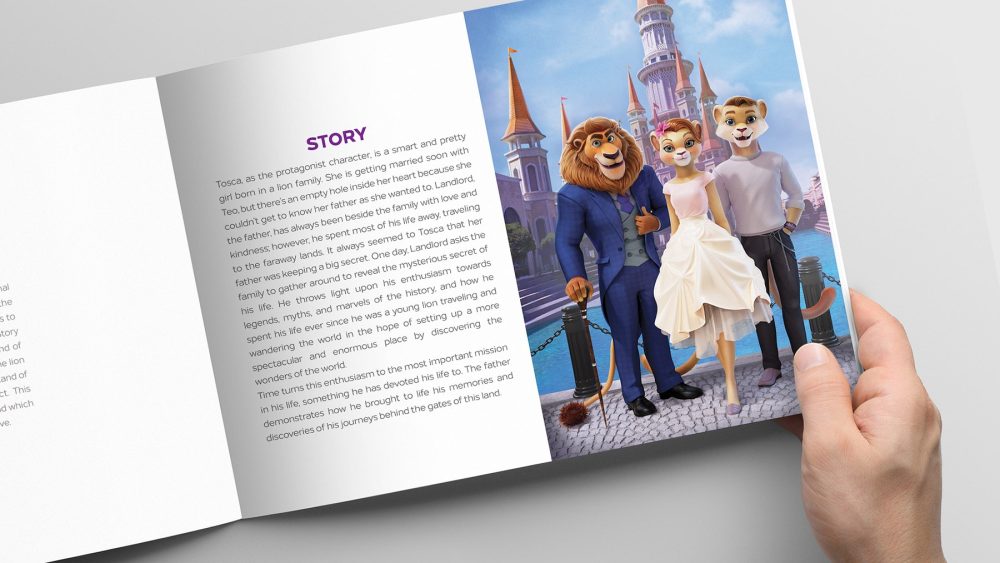
Think about your favorite movie or story characters. Many of them feel close to us because we share something — maybe similar thoughts, feelings, or personality.
That’s why creating a strong backstory is not just a nice extra — it’s a must. Without it, designing and building a mascot would be meaningless.
In this stage, design a universe for the mascot based on your brand’s specific attributes—a universe from which your brand’s representative comes with a unique background story.
Recall one of the famous sports mascots as an example. They all have a rich history closely related to their respective brand, with a lot of depth that makes them lovable. That’s the reason fans embrace them with open arms after a while.
Let us clarify in one sentence: the more profound the depth and details, the further your brand mascot can take your business. We have learned this lesson through creating numerous mascots for multiple brands in various industries.
You can see examples of mascot backstories in our projects.
A Profile Character with Details is Needed
After creating the mascot’s universe, it’s time to decide on the character details. Will it be a serious representative or a funny rabbit that jumps around and depicts the brand’s energetic essence?
Remember, there is still no initial sketch, and this phase’s goal is to prepare the character profile to which the mascot will behave.
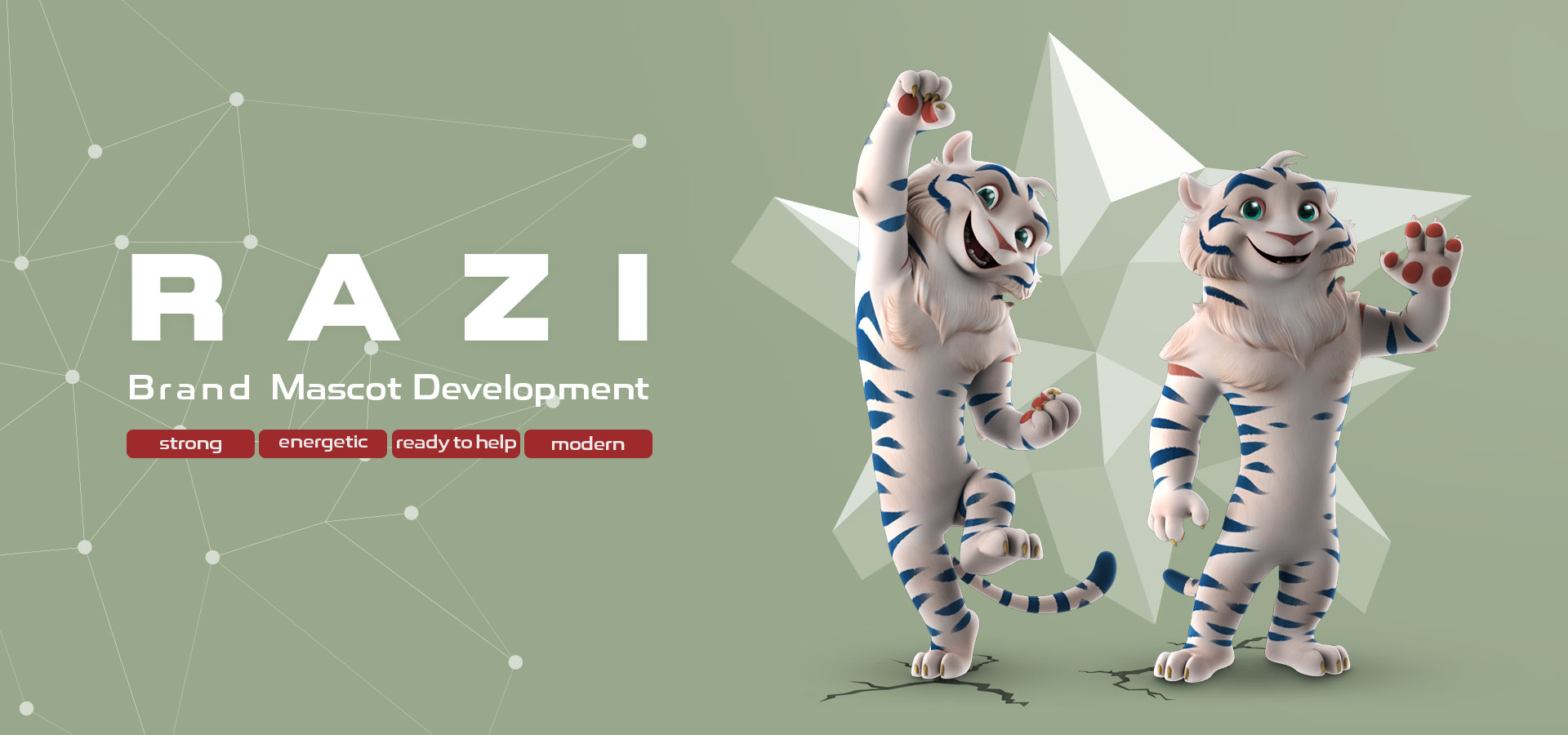
As stated earlier, a brand mascot goes beyond a mere 3D design. It’s the brand’s agent and must act as such. Therefore, determining parameters in this section depends on the requirements we discussed earlier—the core values and brand identity the mascot must embody flawlessly.
At the end of this phase, you will know the characteristics of the mascot, which you will create in the following steps.
Bringing Design Ideas to Paper
Finally, it’s time to start designing an outstanding, innovative, and unique brand mascot that faultlessly represents your business.
Until now, it’s assumed that you have created a fantasy universe, which counts as the mascot’s origin, alongside detailed behavioral traits.
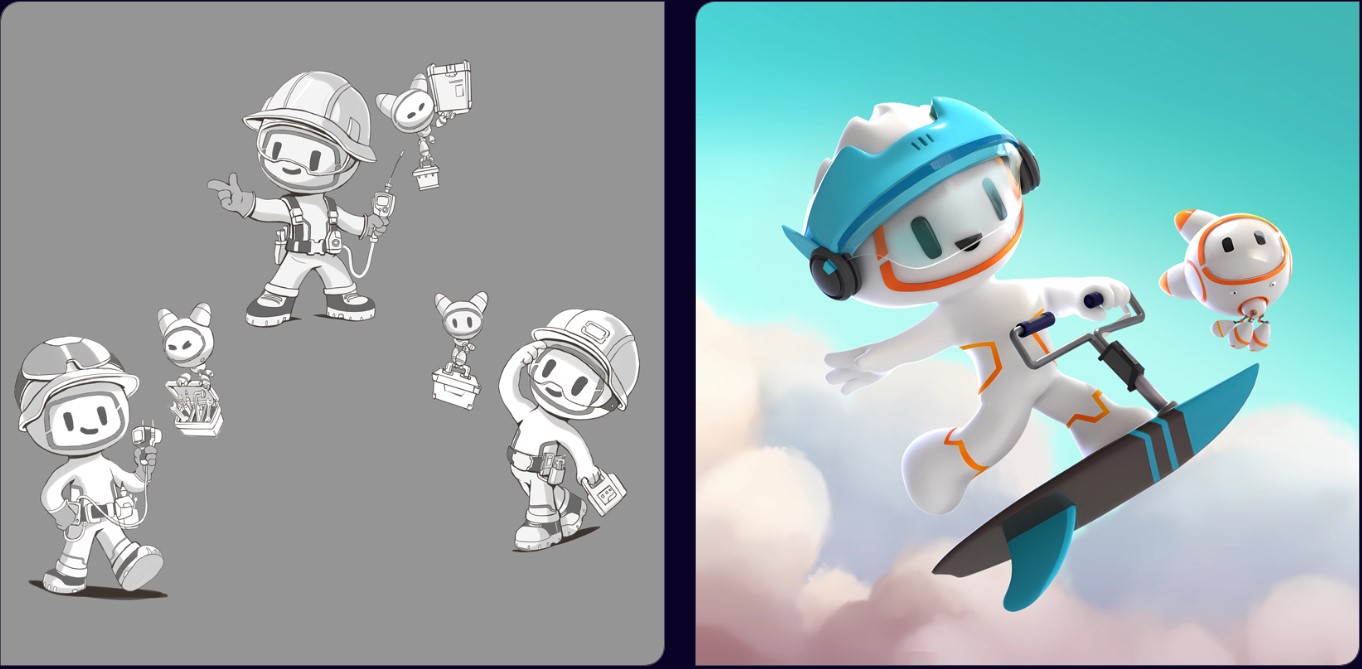
Logically, you’ll need help from skilled designers for this part of the process. Once again, we emphasize that outsourcing mascot design to Artificial Intelligence is not wise, as AI-enabled platforms can’t give the mascot the personality you want it to personify. Earlier, we discussed the effectiveness of depth in designing a mascot; AI isn’t capable of providing you with that depth.
Usually, designers begin their work by drawing basic sketches according to the brief. Upon agreeing on one of them, they polish the sketch and add details. Lastly, they create a 3D version of the mascot, which can be used in digital channels for various purposes.
Choosing a Name for the Mascot
The mascot’s name is as essential as its appearance. Therefore, choosing a name that perfectly fits the representative and matches branding guidelines is another step in the process of creating a mascot.
A good name must be simple and appeal to target audiences. It must be memorable with straightforward spelling.
We recommend that you examine some well-known mascot names to get inspiration for choosing a suitable name for your mascot. Take Geico Gecko, for example—a name with a similar rhythm to the brand’s name, which is Geico. Or Namour, one of Dream Farm Agency’s works. Namour flawlessly fits Saudi Arabia’s culture, and, as statistics prove, children of this country, who are the target audiences of the mascot, adore its name and show love to the character.
In summary, even the best mascots won’t have a chance without a good name that is memorable, easy to spell, and also relatable.
For a more in-depth look at different techniques and examples, you can read our complete guide on choosing the right name for the mascot.
The guide to making a mascot ends here. Now, let’s examine the standard forms of mascots widely used today.
Virtual Mascots: Latest Evolution of Brand Mascots
In the past, there were only physical mascots. For example, Disney used mascot-shaped costumes to dress staff with its characters, from Mickey Mouse to Bugs Bunny, to encourage excitement among children visiting Disney Lands.
As time passed, technology evolved, and displays came into play. In the first phase of evolution, brands started to create 2D versions of their mascots for that time’s technology. After that, 3D versions became common, and now, businesses are using their mascots as virtual influencers.
Virtual influencers, also known as AI influencers, digital humans, digital influencers, etc., are CGI formats of your mascot that will be displayed on digital screens. In the blog “What is Virtual Influencer?“, we reviewed this concept in detail.
Brands use these relatively new forms of mascots on interactive displays in booths, shops, around the city’s corners, etc. To learn about different ways of interactive advertising, we advise you to read the blog “What is Interactive Advertising? + (Definition, Types, Benefits and Examples).”
Additionally, virtual influencers are helpful in running marketing and advertising campaigns on various digital channels. That’s why we suggest our clients consider using their brand mascots as virtual influencers: This is how the world goes around these days.
But does that mean physical mascots are no longer needed? What if a brand still plans to leverage a mascot-shaped doll outside a mall?
What if You Need a Physical Form of the Brand Mascot?
Physical mascots are still on the horizon. For example, the sports industry still benefits from physical mascots in multiple ways. Read the blog “30 Top Famous Sports Mascots” to see real-world examples.
Even though the world is rapidly digitalizing, we still live in a physical world. Therefore, some brands usually prefer to have a physical version of their mascot in hand for diverse purposes.
Maybe somebody should wear the mascot costume in front of the restaurant. Or managers may plan to send the mascot to charity events on behalf of the brand. Perhaps the mascot is going to host a TV program or attend reality shows.
Whatever the reason, there are companies that specialize in tailoring mascot costumes for brands. You’ll first need a highly detailed 3D model on a computer. In fact, even if you only need a physical form of the mascot, the process is the same and goes through the stages we examined in the previous section.
You should provide the company with the necessary files to ensure the physical costume closely matches the digital version of your mascot.
In simpler terms, you’ll give the 3D version of your mascot to companies that possess this specialty, and they make a mascot with fabrics, leather, or any material that suits your mascot best.
Obviously, this process is challenging, and not everyone is capable of managing it flawlessly. So, what’s the solution? Outsourcing the job to professional agencies.
We’re Experts in Mascot Development at Dream Farm Agency
A well-designed mascot can elevate a brand’s success and help it achieve its goals and objectives. However, creating an outstanding mascot is a complex process that requires expert skills to achieve the desired outcomes.
Therefore, it is suggested that you outsource the job to agencies with the required infrastructure and experience in this field and dedicate your time to enhancing and expanding your business. This way, you’ll have an outstanding mascot that can do many things while not wasting time and budget on a task you and your team are unfamiliar with.
For years, we have created several mascots for various businesses across diverse industries. Hence, let’s say we’re experts in this work and are ready to take responsibility for creating a well-developed mascot for your brand that flawlessly suits your needs and matches your branding principles.
Check out our track record, and let us help bring your mascot vision to life, elevating your brand to new heights. Contact us today to get started.
Nikan


